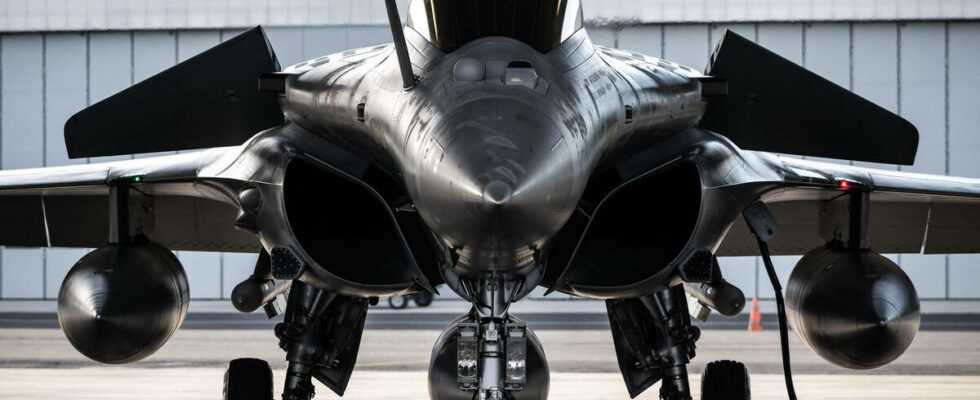Jean-Louis Lozier, former head of the “nuclear forces” division of the general staff, analyzes for “Liberation” the firing just carried out by France, at a time when Vladimir Putin continues to brandish the threat of nuclear fire.
The shot was nothing more than a try, but its timing raises questions. This Wednesday, a nuclear missile – without a charge – was launched by a French Air Force Rafale from the Cazaux base in Gironde. The test was therefore passed, which the French State welcomed through his Minister for the Armed Forces. However, it raises questions, as Vladimir Putin has raised the nuclear threat many times in recent weeks on the sidelines of the Russian invasion of Ukraine.
Jean-Louis Lozier, former head of the “nuclear forces” division of the army staff and ex-commander of a nuclear submarine, now an adviser to the French Institute for International Relations (Ifri), nevertheless wants to be reassuring with Release. According to him, this kind of test was planned for a long time and has no direct link with the ongoing war at the gates of Europe. Despite everything, it allows France to show the rest of the world that it remains “at the best operational level” regarding its nuclear force.
What type of nuclear missile was fired and what is its purpose?
It is an improved medium-range air-to-surface missile (ASMPA), which equips the airborne component of our strategic nuclear forces. France has two components. One is underwater, with SSBNs [sous-marins nucléaires lanceurs d’engins, ndlr] carrying ballistic missiles. And on the other hand aerobic missiles [de croisière], which move through the atmosphere when launched from the Rafale aircraft. These are extremely advanced missiles, which carry several hundred kilometers, with a high penetration capacity. They must be able to pass between anti-missile defenses and adapt to the adversary context. It is important that they are always at the best operational level.
Should we see in this essay a way for France to reaffirm its nuclear power in the context of the war in Ukraine?
We cannot make a direct link with the war in Ukraine since this test was planned for a long time. The programs of our nuclear armaments generally extend over several years. The improved medium-range air-to-surface missile was put into active service in 2010 for installation on the Rafale. Its lifespan is about twenty-five years. It is normal to carry out a renovation around mid-life, so that the performance of the missile, in particular in its ability to penetrate enemy forces, remains at the highest level. This renovation had also been decided by President Hollande in 2013, so the shooting was planned, independently of Ukrainian affairs. Delaying it could have had consequences for the program.
Afterwards, from my point of view, it is obviously a good thing that this test has passed in the context of the current crisis even if this is not specific to it.
Why make it public and proclaim loud and clear that the operation is a success, as the French government did?
Anyway, it is very complicated to make this kind of test secret. It mobilizes a certain number of means and there is always a press release. It’s the same when you fire from a nuclear ballistic missile submarine, like every three or four years in southern Brittany. The residents of the Pointe de Penmarc’h see a missile leaving somewhere from the sea, so in any case it must be made public. Both not to worry, but also to inform both the French citizen and the rest of the world.
It is always important, whether we like it or not, whether we are in crisis or not, to demonstrate that the system works. In any case, there is a signal sent to the other protagonists, to all the global players. This time the message is: yes, our airborne component is still operational and at the highest technical level.
